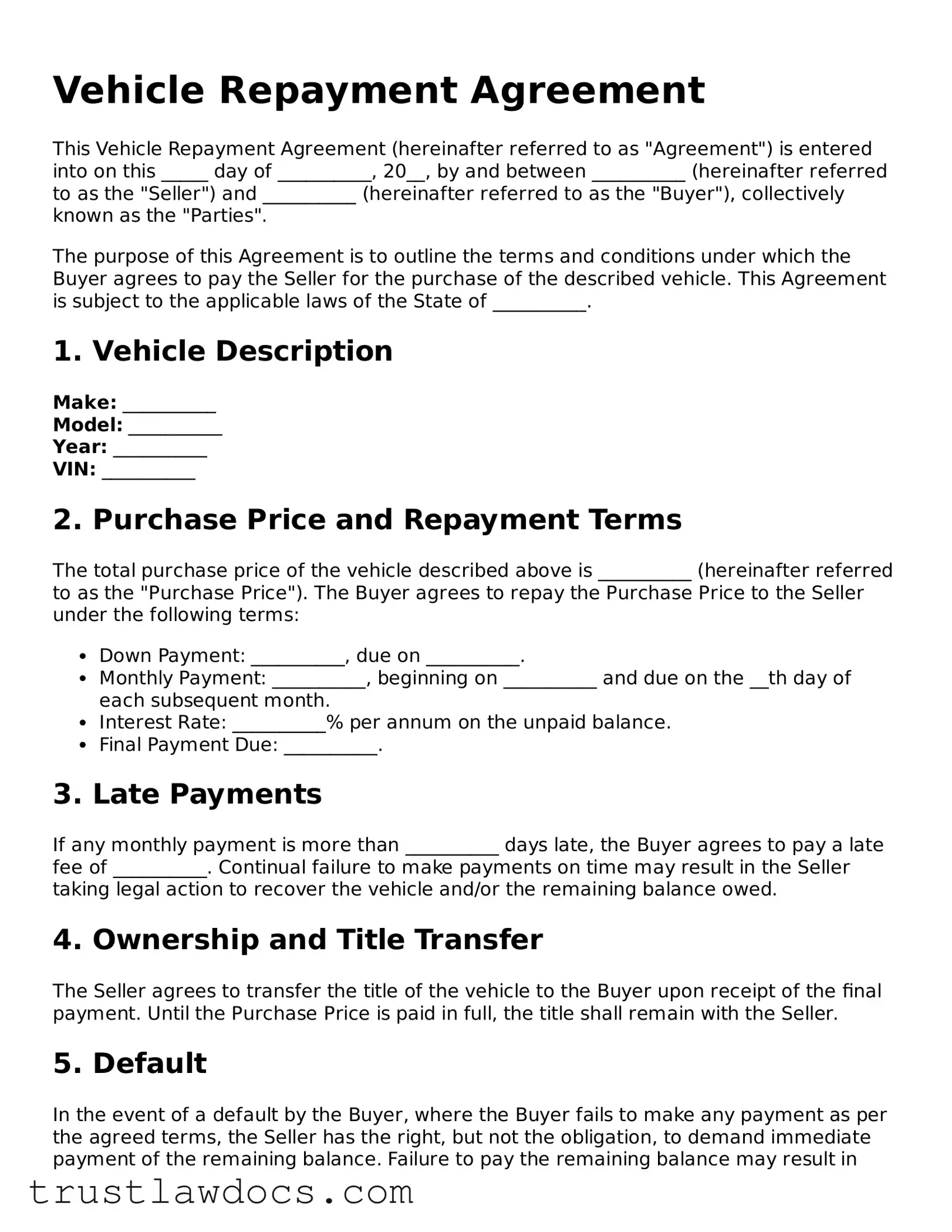Vehicle Repayment Agreement
This Vehicle Repayment Agreement (hereinafter referred to as "Agreement") is entered into on this _____ day of __________, 20__, by and between __________ (hereinafter referred to as the "Seller") and __________ (hereinafter referred to as the "Buyer"), collectively known as the "Parties".
The purpose of this Agreement is to outline the terms and conditions under which the Buyer agrees to pay the Seller for the purchase of the described vehicle. This Agreement is subject to the applicable laws of the State of __________.
1. Vehicle Description
Make: __________
Model: __________
Year: __________
VIN: __________
2. Purchase Price and Repayment Terms
The total purchase price of the vehicle described above is __________ (hereinafter referred to as the "Purchase Price"). The Buyer agrees to repay the Purchase Price to the Seller under the following terms:
- Down Payment: __________, due on __________.
- Monthly Payment: __________, beginning on __________ and due on the __th day of each subsequent month.
- Interest Rate: __________% per annum on the unpaid balance.
- Final Payment Due: __________.
3. Late Payments
If any monthly payment is more than __________ days late, the Buyer agrees to pay a late fee of __________. Continual failure to make payments on time may result in the Seller taking legal action to recover the vehicle and/or the remaining balance owed.
4. Ownership and Title Transfer
The Seller agrees to transfer the title of the vehicle to the Buyer upon receipt of the final payment. Until the Purchase Price is paid in full, the title shall remain with the Seller.
5. Default
In the event of a default by the Buyer, where the Buyer fails to make any payment as per the agreed terms, the Seller has the right, but not the obligation, to demand immediate payment of the remaining balance. Failure to pay the remaining balance may result in legal actions. The Seller reserves the right to repossess the vehicle in the event of the Buyer's default.
6. Governing Law
This Agreement shall be governed under the laws of the State of __________.
7. Agreement Modification
No modification of this Agreement shall be considered valid unless agreed upon in writing by both Parties.
8. Acknowledgment
Both Parties acknowledge they have read, understood, and agree to the terms and conditions stated in this Agreement.
IN WITNESS WHEREOF, the Parties have executed this Agreement as of the date first written above.
________________________
Seller's Signature
________________________
Buyer's Signature
________________________
Witness Signature (Optional)
